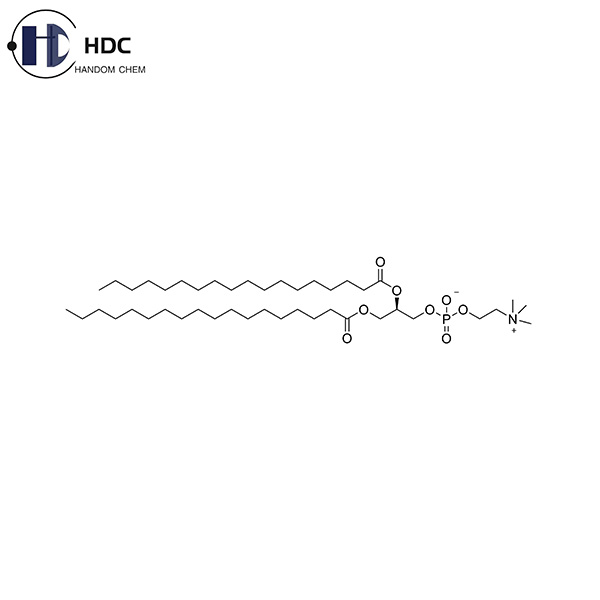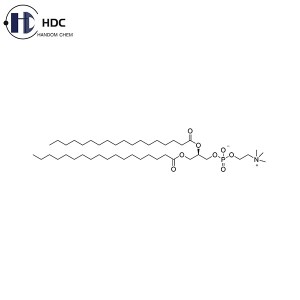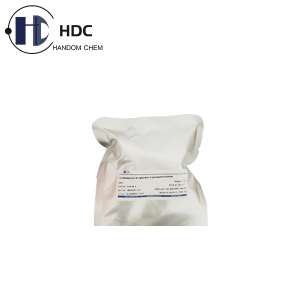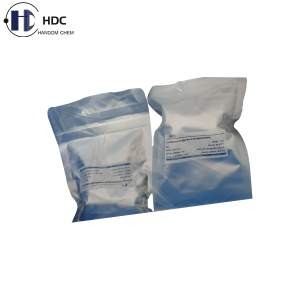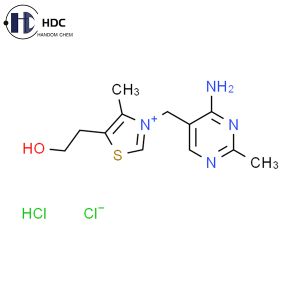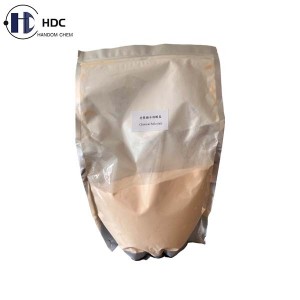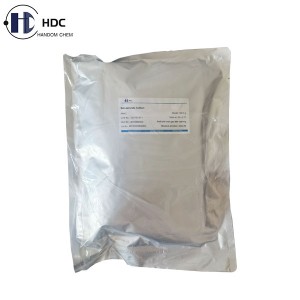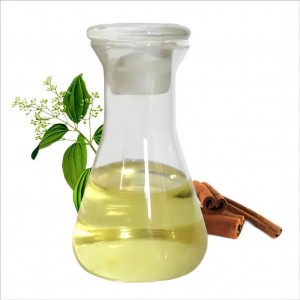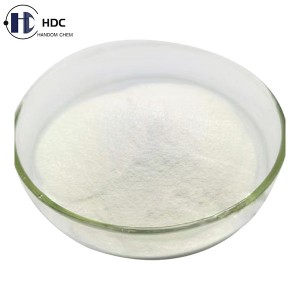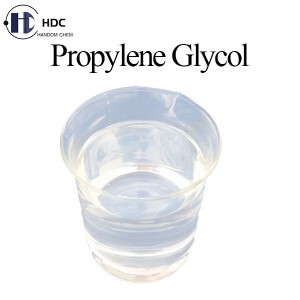1,2-distearoyl-sn-glycero-3-phosphocholine
Brief Introduction:
1,2-distearoyl-sn-glycero-3-phosphocholine, also known as DSPC, is a phospholipid molecule with two stearoyl chains and a glycerophosphocholine head. This structure gives DSPC good stability and biocompatibility, making it an important component of the cell membrane. In the body, DSPC not only helps maintain the normal function and morphology of cells, but also plays a vital role in the permeability and ion balance of cell membranes.
The hydrophobic stearoyl chains of DSPC are intertwined with the hydrophobic tails of other phospholipid molecules to jointly construct a stable lipid bilayer structure, which provides a solid barrier for cells and effectively prevents external harmful substances from invading cells. At the same time, the stability of the lipid bilayer structure also ensures the stability of the internal environment of the cell, providing a strong guarantee for various life activities of the cell.
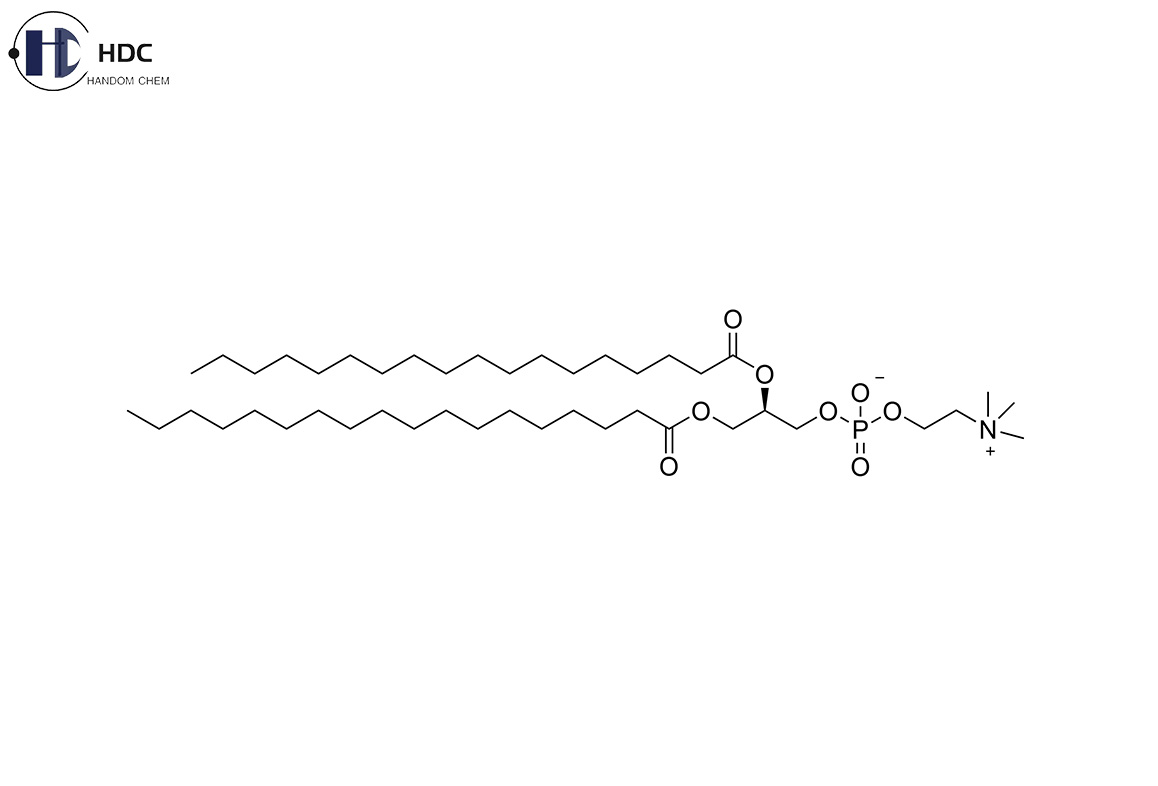
Specifications of our 1,2-distearoyl-sn-glycero-3-phosphocholine (DSPC):
| Test Items | Specifications | Test Methods | |
| Appearance | White/off-white powder-like solid | Visual | |
| Identity | IR | Complies with the reference substance structure | IR |
| H-NMR | Complies with the reference substance structure | H-NMR | |
| Molecular Weight | 789.62 ± 0.5 Da | ESI-MS | |
| Assay | 90.0% ~ 110.0% | HPLC | |
| Purity | Not less than 95.0% | HPLC | |
| Related Substances | Stearic Acid | Not more than 0.50% | HPLC |
| LysoPC | Not more than 0.50% | HPLC | |
| DSPC-Imp-2 | Not more than 1.00% | HPLC | |
| DSPC-Imp-5 | Not more than 2.00% | HPLC | |
| Other single impurity | Not more than 1.00% | HPLC | |
| Moisture | Not more than 2.00% | KF | |
| Residual Solvents | Dichloromethane | Not more than 600 ppm | GC |
| Ethyl Acetate | Not more than 5000 ppm | GC | |
| Acetone | Not more than 5000 ppm | GC | |
| Methyl tert-butyl ether | Not more than 5000 ppm | GC | |
| Methanol | Not more than 3000 ppm | GC | |
| Acetic Acid | Not more than 5000 ppm | GC | |
| Bacterial Endotoxin | Not more than 0.1 EU/mg | ChP<1143> | |
| Microbial Limits | Total Aerobic Microbial Count | Not more than 100 CFU/g | ChP<1105> |
| Total combined Yeasts & Mould Count | Not more than 10 CFU/g | ChP<1105> | |
| Elemental Impurities | Cuprum(Cu) | Not more than 30 ppm | ICP-MS |
| Arsenic(As) | Not more than 1.5 ppm | ICP-MS | |
| Cadmium(Cd) | Not more than 0.2 ppm | ICP-MS | |
| Mercury(Hg) | Not more than 0.3 ppm | ICP-MS | |
| Lead(Pb) | Not more than 0.5 ppm | ICP-MS | |
| Cobalt(Co) | Not more than 0.5 ppm | ICP-MS | |
| Vanadium(V) | Not more than 1.0 ppm | ICP-MS | |
| Nickel(Ni) | Not more than 2.0 ppm | ICP-MS | |
| Lithium(Li) | Not more than 25 ppm | ICP-MS | |
| Antimony(Sb) | Not more than 9 ppm | ICP-MS | |
Application Areas of 1,2-Distearoyl-Sn-Glycero-3-Phosphocholine (DSPC):
1) Drug Delivery:
1,2-Distearoyl-Sn-Glycero-3-Phosphocholine(DSPC) has good biocompatibility and is widely used in the pharmaceutical industry. It can be used as a carrier for drug particles, which can increase the bioavailability of drugs in the human body, thereby improving drug efficacy. At the same time, DSPC can also enhance the stability of drugs and effectively protect drugs from the influence of the external environment during storage and transportation.
2) Liposome Microbubble Contrast Agent:
In medical imaging, DSPC is often used to prepare liposome microbubble contrast agents to enhance the contrast of ultrasound imaging.
3) Life Sciences:
In the field of life sciences, DSPC is widely used to study monolayer lipid membranes, prepare lipid vesicles, and the structure and properties of cell membranes.
4) Industrial Fields:
In industry, as a surfactant, DSPC can also increase the stability and rheology of products and is used in lubricants, emulsifiers, antistatic agents and other fields.
Packaging:
1g/Bottle, 3g/Bottle, 5g/Bottle, 10g/Bottle, 20g/Bottle, 50g/Bottle or according to the specific requirements from customers.
Recommended Storage Conditions:
For short-term storage, it is recommended to store at 2℃ ~ 8℃; it is recommended to keep at -25℃ ~ -15℃ under an inert atmosphere for long-term storage.
For reducing the absorption of the moisture, it should be slowly warmed to ambient temperature before opened.
※ Note: Avoid frequent thawing and freezing!!
Shelf Life:
24 months if stored under above mentioned conditions.


